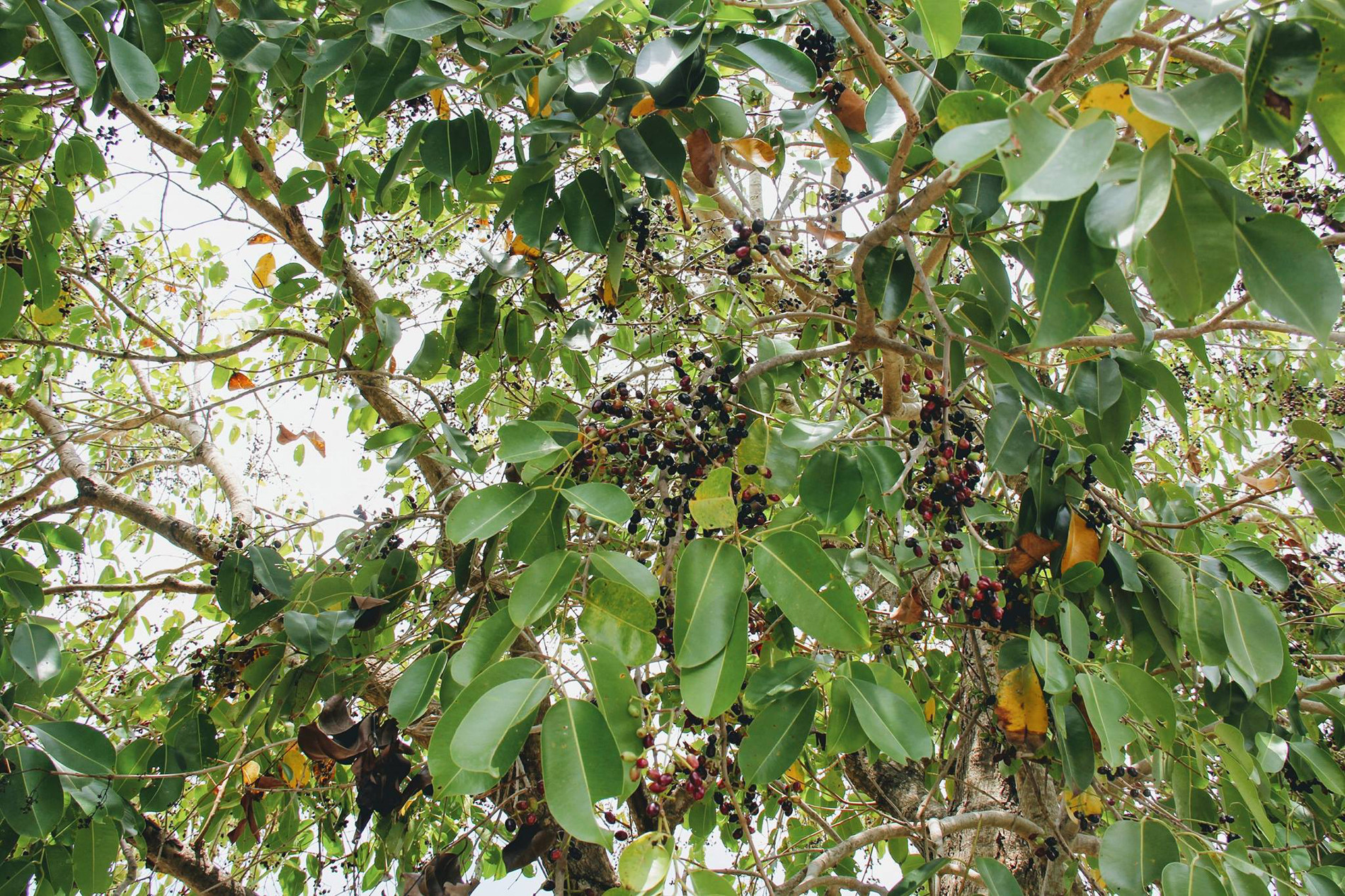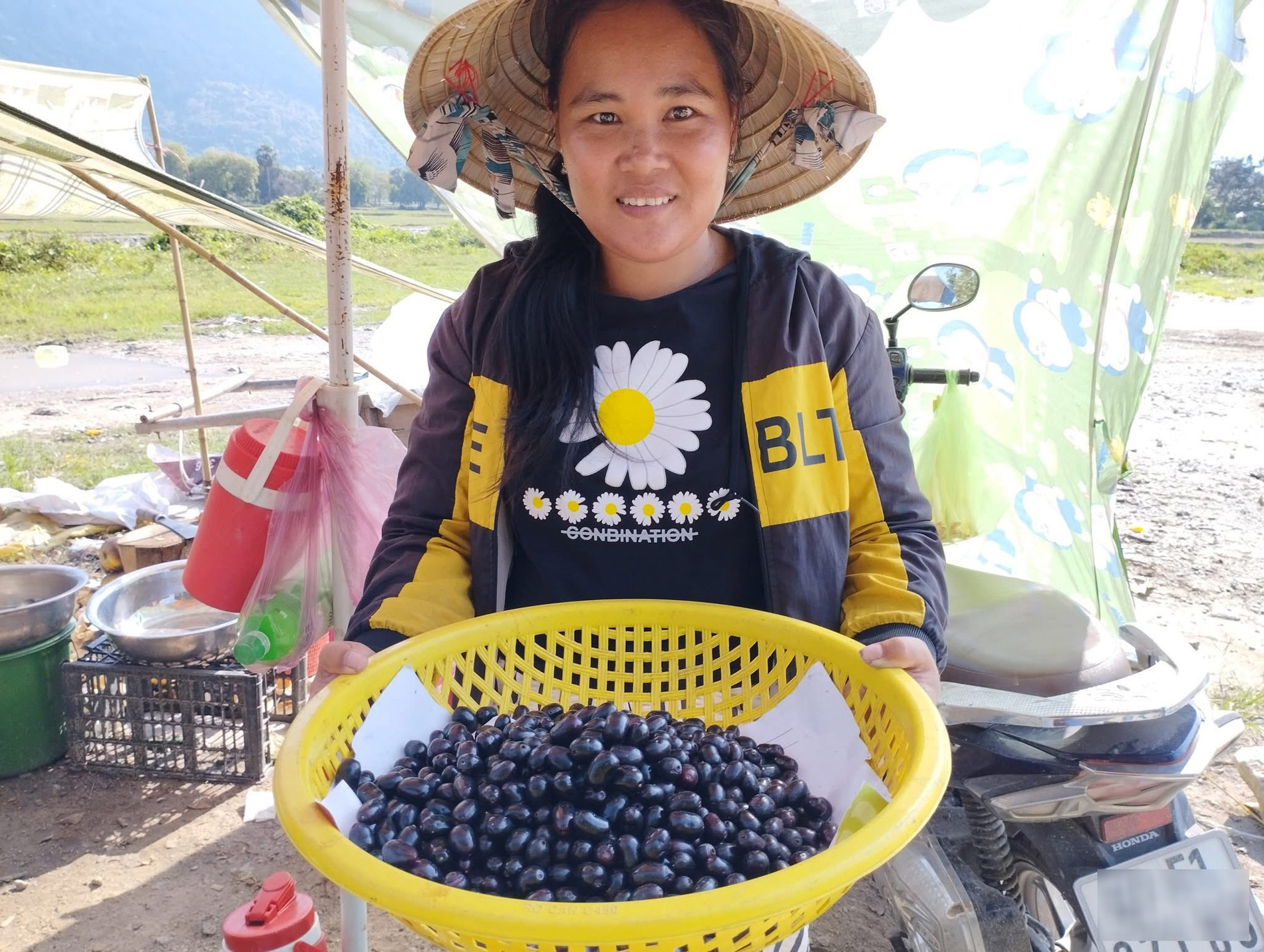Growing in dense clusters on tall, sturdy trees, the jamun fruit - jet-black, juicy, and with a sweet-tart flavor - is a signature seasonal delicacy in An Giang’s Bay Nui region.
Despite turning tongues and teeth purple-black when eaten, it remains highly sought after by locals and tourists alike.
 |
 |
Jamun trees line Provincial Road 943, with locals harvesting and selling fruit beneath their shade. Photo: Hoang Dung
Every year around April, along Provincial Road 943 from Nui To Commune to Tri Ton Town (Tri Ton District, An Giang Province), vendors line the roadside with baskets full of small, dark fruits that immediately catch the eye. These are jamun (called trâm in Vietnamese), a beloved local specialty as popular as toddy palm fruit and langsat.
According to local residents, jamun trees grow wild along rice paddies, riverbanks, and rural roads. While neighboring provinces like Dong Thap and Can Tho also have jamun trees, Nui To Commune is home to the densest concentration.

Each tree bears fruit only once a year, making jamun a rare seasonal treat. Photo: Pham Kieu Ni
 |
 |
Ripe jamun fruit is shiny black with purple flesh inside. Photo: Hoang Dung
The jamun tree is a large, hardy hardwood species with lush canopies that not only provide shade but also hold considerable economic value due to its fruit. Hoang Dung, a local photographer, explains that the jamun season runs from mid-April through the end of June, with the fruit selling for VND 80,000–100,000 per kilogram (about USD 3.15–3.94).
Each tree bears fruit only once a year, and since they grow naturally without chemical intervention, jamun is prized as a clean and healthy specialty fruit.

Despite staining teeth and tongue, jamun remains a cherished local snack. Photo: Street Food Thao Vy

Tourists flock to Bay Nui during jamun season to buy the fruit as gifts. Photo: Hoang Dung
The fruit is oval-shaped. When ripe, it sports a shiny black skin and deep purple flesh. Young jamun are green, turning red as they mature, and finally reaching a dark gloss when fully ripe. Though the flesh is thin and the seed large, the fruit’s sweet, tangy, and slightly astringent taste has a loyal following. Many enjoy it dipped in chili salt for an added punch.
Despite the stained teeth and tongues it leaves behind, jamun's appeal never fades. Visitors to the Bay Nui region during peak season often go out of their way to buy several kilograms to take home as gifts.

Harvesting jamun, however, is no easy task. Locals must use ladders to scale trees that can reach 8–10 meters high, carefully picking individual fruits and clusters to avoid bruising the delicate flesh.
According to growers, the quality of jamun depends heavily on weather conditions. In hot, dry weather, fruits tend to be smaller but sweeter; in rainy seasons, they grow larger but taste milder. Interestingly, the greener the tree’s leaves, the thicker and sweeter the fruit’s flesh.
Nguyen Van Van, Head of the Agriculture and Rural Development Department in Tri Ton District, shared that there are about 2,000 jamun trees in the area, mostly concentrated in Nui To Commune and Co To Town. Although jamun trees do not yield as much profit as toddy palms or other fruits, they are deeply rooted in the Khmer community’s lifestyle and have become part of the cultural identity of Bay Nui.
Thao Trinh